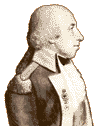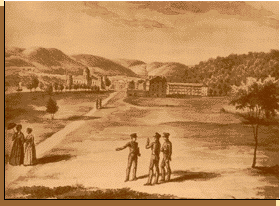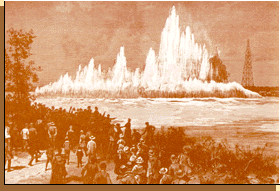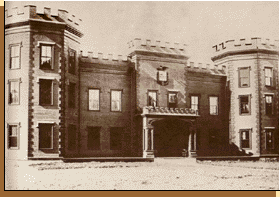
The New York District traces its roots back to the Revolutionary War
In 1776, at George Washington's directive, Rufus Putnam was appointed Chief Engineer in charge of the defenses of New York. Putnam's first task was to salvage something from the incomplete and poorly situated fortifications built around the highlands of West Point in 1775 by Bernard Romans, a Dutch engineer. We recognize Putnam as our first District Engineer.

West Point
The presence of the Corps of Engineers at West Point would continue through the next century. In 1802, Thomas Jefferson formally established a Corps of Engineers by declaring, "that the said corps, when so organized, shall be stationed at West Point, and shall constitute a military academy." In fact, up until 1866, the West Point Academy Superintendent was also the Chief of Engineers. All members of the Corps in those early years were West Point graduates. The Corps did all the construction at the U.S. Military Academy until 1861, and then from 1941 until present.
In 1807, Jonathan Williams, Chief of Engineers and the first Superintendent of West Point, was commissioned to build defenses at the entrance of New York Harbor as the threat of British attack loomed following England's trade embargo. The War of 1812 came, but not one fort or fortification built by an engineering graduate of West Point was taken by the British. Between 1812 and the start of the Civil War, the Corps built five coastal defense forts in the New York area: Fort Hamilton, Schuyler, Totten, Tompkins and Wadsworth.

Big Bang
In the 1820s, the Corps was given the water resource mission which brought us into the civil works arena. In the 1850s, 1,000 ships on average ran aground every year at Hell Gate, a dangerous spot in the East River causing over $2 million worth of damage to shipping annually. General John Newton of the Corps developed an ingenious plan to set off huge underwater explosions which demolished many of the rocks and significantly reduced the hazard to navigation. The second of these blasts, in 1885, was the largest manmade explosion to that time and firmly established the Corps with a civil works mission.
To The Present
Although the Corps of Engineers has had a presence in New York since the Revolutionary War, it wasn't until the early 1900s that the New York Corps (as it was commonly known then) was formally organized into three districts--called New York Districts I, II, and III. In 1938, those districts were merged. From then on, we were known as the U.S. Army Corps of Engineers, New York District.

Corps of Engineers School of Engineering
at Willets Point, New York
For more recent history, the history book "Continuing the Mission: A History of the New York District from 1975-2005" is available for download in its entirety as a PDF file. Please note it is a large, approximately 180MB file. It can be downloaded by clicking here.